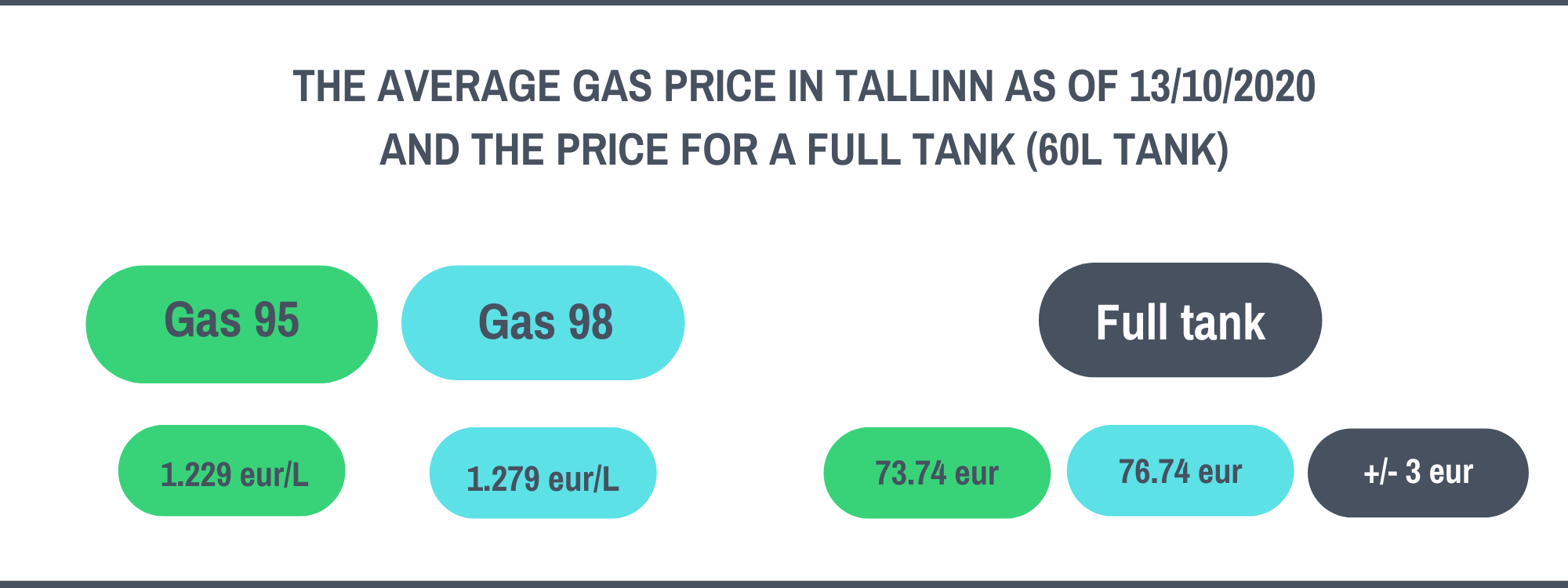What is Eco-driving?

The goal of economical driving is obvious — you have to drive as safely and smoothly as possible to save the vehicle itself, the environment, and fuel.
For obvious reasons, the latter is often the most important for both companies and individuals, as it gives the fastest feel to the thickness of the wallet.
Category B drivers have had to acquire the ability to drive economically even in relevant training, but is seldom seen in the cityscape. Why?
Unfortunately, most drivers do not understand the principles of true eco-driving and have little knowledge about what and how car fuel is used. Driving as sparingly as possible, avoiding sudden accelerations, excessive maneuvers, and sudden braking is by no means the only thing to keep in mind when driving.
Let’s take a closer look at what cars use fuel for and what each driver can do to keep costs to a minimum.
Summary:
- what are the most common myths about sustainable driving
- what cars use fuel for
- what the driver can do to drive economically
Eco-driving
The easiest way to describe true eco-driving is to travel as smoothly as possible, avoiding unnecessary sudden accelerations and complete stops, to save the vehicle, environment, and fuel.
Driving sparingly does not mean driving slowly at low engine speeds, as many drivers unfortunately think.
Also, many other myths accompany economic driving. Behaving according to their knowledge, costs related to every-day driving can raise significantly.
6 common misconceptions about eco-driving
Myth no. 1: After stopping behind a red traffic light, you have to accelerate as calmly as possible
The longer you spend accelerating, the more fuel your car consumes. Fuel consumption might raise for the time of acceleration, but the car’s long-term fuel consumption is much more important.
Unnecessary maneuvers and accelerations while driving should, of course, be avoided, but there is no point in holding back when the green traffic light comes on. Instead, you should try to reach the desired speed by accelerating quite fast yet safely.
Myth no. 2: Eco-driving means you require more time to cover distances
If economical driving only stands for slower driving for the driver, then such a logical conclusion is quite easy to come by. Experiments have shown that eco-driving can actually save time.
Economical driving means efficient driving, and a car is efficient when it is in motion. If the driver can see the bigger picture and takes into account the traffic lights ahead, other travelers, and the correct longitudinal distance, fewer stops are needed.
Myth no. 3: Low engine speeds are more economical
The driver’s goal should be to maintain optimum engine speed, which is different for cars. However, this certainly does not mean driving as slowly as possible.
The car’s manual indicates the optimum vehicle speed and should be observed. It should be noted that most gasoline engines run at 2000-3000 rpm, while diesel engines run at 1500-2000 rpm.
Myth no. 4: Idling reduces fuel consumption
This notion is completely wrong because the idling engine is constantly supplied with fuel.
For this reason, it is also recommended to use the engine rather than go idle to reduce the speed, for example in front of a red traffic light. If you change gears but do not accelerate, the engine also does not consume fuel.
Myth no. 5: Idling is the best way to warm up your car’s engine
The fuel consumption of a cold engine is indeed higher than that of a warm one, but while idling, you pay for nothing — the fuel efficiency is neither more nor less than 0 km/h.
Depending on the vehicle type, load, engine size, and fuel type, an idling vehicle consumes 0.6-5.7 L of fuel per hour.
The power sources of modern vehicles heat up much faster while driving. Therefore, it is wise to start driving calmly and simply avoid sudden accelerations and very high engine speeds until the engine has completely warmed up. This usually takes about 10-15 minutes.
Myth no. 6: High octane gasoline is more efficient
To reap the benefits of higher octane petrol, the car has to know how to use it — the vehicle’s hardware and software are set accordingly. The recommended gasoline for most cars is regular octane.
In most cases, higher octane gasoline offers absolutely no benefit what so ever — it won’t make your car go faster, perform better, or give it better mileage. So stop wasting money on it.
The fuel recommended by the car manufacturer is indicated in the Owner’s manual and, in the case of some cars, on the fuel filler flap.

What does the car use fuel for?
The car’s economy depends on the efficiency of its power source — how much of the energy from the fuel is used for driving. The harsh reality is that most of the energy is wasted in the car’s engine.
For different car brands, the figures vary greatly, but traditionally the efficiency of diesel engines is about 30% and that of petrol engines only 20%. For hybrid vehicles, efficiency is around 40%.
Many factors affect fuel consumption, and not everything can be affected by the driver. Let’s take a closer look.

Engine start-up
Although climate change is noticeable all over the world, below zero degrees must still be taken into account for at least 5-6 months a year in Estonia.
It can take up to 4 kilometers of urban fuel to start a cold engine, and the efficiency of the power source is also significantly lower than that of a warm engine.
If possible, preheat the engine with Webasto or an electrical outlet. If that cannot be done, start driving calmly rather than idling with the engine running.
Overcoming air resistance
The car’s air resistance is affected by several factors: air density, body design, and cross-sectional area, as well as weather conditions and the car’s driving speed. In summary, it can be said that a car’s engine is most efficient in calm and mild weather.
An experiment performed with the Volkswagen Golf 1.6 FSI is well suited to illustrate this topic. It turned out that 17% of the fuel was used by the car only to overcome the air resistance. Together with the ski box attached to the roof, the air resistance increased even more and the car used a liter more fuel to cover 100 km.
As a result, over the years, more and more vehicles with streamlined bodies have been seen in traffic. This body type allows spending less energy to overcome air resistance.
Overcoming the rolling resistance
The main factors influencing the car’s rolling resistance are tires, weight, pavement, and driving speed. The heavier the vehicle and wider the tires, the more energy it needs to move fast.
To reduce fuel consumption, the driver can only do so much. Regularly check the car’s tire pressure (even a small drop in tire pressure has a significant effect on fuel consumption), try not to overload the vehicle unnecessarily, and drive on as smooth a surface as possible.
Transmission
During the transmission, energy is transferred from the engine to the wheels, which allows the vehicle to move. In almost all cars, the biggest factor affecting the transmission is the gearbox. A higher number of gears allows driving at different speeds with the most efficient fuel consumption.
Whether the driver prefers a car with a manual or automatic transmission is a matter of taste. However, it is not true that automatic engines do not allow you to drive economically.
Modern cars with automatic transmissions are very advanced. If the car has an Eco driving mode, it should be used. That way, a higher gear is engaged at a lower speed and allows better use of the engine’s power efficiency.
Auxiliary equipment
This includes all the accessories that make driving more comfortable, safer, and enjoyable: windshield wipers, seat, mirror and steering wheel heating, air conditioning, etc.
Whereas in the past auxiliary equipment was powered directly from the engine, modern cars use electricity. Therefore, auxiliaries only work when the driver wishes to use them and their impact on fuel consumption is not significant. However, there is no point keeping everything running at full capacity when there is no practical need for it.
There is no ideal driving scenario and the driver can never foresee all the features that affect fuel consumption or counteract them. However, following some simple principles, you can achieve an economical driving experience.
The golden rules of sustainable driving
Economical driving is good for both the environment and your wallet. In addition to reducing fuel consumption and emissions, fuel economy also keeps the vehicle running longer and makes the traffic culture more enjoyable for all of us.
As mentioned earlier, it is the reduction of fuel consumption that is the most important benefit for most of us. With eco-driving, fuel consumption can be reduced by up to 25% from various sources.
The average person living near Tallinn spends an average of 170 euros a month on fuel. Driving sparingly could therefore save up to 42.5 euros a month and 510 euros a year.

If you want to eco-drive, remember the following:
- Preheat the engine — Webasto or electric (if this is not possible, go calmly)
- Drive smoothly and keep the vehicle in motion — think ahead and consider traffic signs and lights as well as other road users; Avoid complete stops as much as possible
- Accelerate briskly and use low engine speeds — reach a safe and desired speed quickly, and then try to keep it stable
- Do not idle — if you stop for more than 20 seconds behind a level crossing or at a traffic light, stop the engine
- If possible, remove excess cargo from the car — each added 20 kg increases fuel consumption by an average of 1%
- Check tire pressure regularly — even a small loss in tire pressure increases fuel consumption by 10%
- Use auxiliary equipment only when necessary — when driving at low speeds, open the windows instead of using the air conditioner
- Choose the best route — your usual commute to work may be the shortest in terms of mileage, but it won’t save you any money if you are spending half of the travel time being stuck in a traffic jam
Acquiring a sustainable driving style takes time and practice, but by constantly keeping in mind the right principles, you will soon acquire the necessary skills!
Companies find help from GPS solutions
Drivers’ driving habits have often become so entrenched over the years that they no longer notice the mistakes they are making while driving.
In this case, Navirec’s ECO drive solution can be helpful, allowing real-time monitoring of the driver’s driving style and calculating the ECo score.
The solution is being used successfully by many companies, including Bolt and Omniva. Both of them have reduced fuel costs and increased the safety of their employees and customers.


